Cable Ties & Zip Ties
4" - 60" Long Cable Ties Available, Variety Of Colors & Materials
Additional Information
Cable Ties: The Ultimate Guide to Zip Ties, Tie Wraps, and More
Cable ties are the most popular and economical products that CableTiesAndMore.com offers. The demand for the cable ties we manufacture and supply is exceptional. Not only due to their affordability but also because of their inherent quality. Furthermore, It is essential to purchase zip ties that are made with virgin nylon 6/6 resins, as quality raw materials affect the tensile strength and durability. Cable ties longevity and overall strength will be significantly affected if the wire ties are made using recycled material.
Cable Ties And More Experience
Cable Ties And More, has supplied and worked with our manufacturing partners to ensure we offer the best quality cable ties and zip tie accessories for over 25 years. We have the experience and test data to prove our wire tie quality is second to none.
Cabletiesandmore.com ensures that we offer different sizes and types of cable ties that would be suitable for each specific type of application and their requirements. An example of this is the Stainless Steel zip tie that is recommended for applications that can resist various chemicals, salts, and acid exposure. Further, another example is the Velcro Ties and Straps, which are ideal for temporary, and reusable strapping and bundling of wires.
Cabletiesandmore.com is proud to boast its offering of high quality yet affordable cable ties that are available in different materials, lengths, and colors. End-users must know the requirements of their application to utilize the right capacity and strength of cable ties properly.
Welcome to Your Go-To Source for Cable Ties
At CableTiesAndMore.com, we pride ourselves on offering a vast selection of cable ties, also known as zip ties or tie wraps, that cater to various industries, applications, and requirements. From heavy-duty industrial solutions to reusable and color-coded ties for DIY projects, we have the perfect solution for your needs.
Explore the different types of cable ties we provide and learn everything you need to know about their uses, history, and functionality.
What Are Cable Ties?
Cable ties are versatile fastening devices primarily used to bundle, organize, or secure cables, wires, and other items. Known for their simplicity and durability, cable ties are a staple in industries like construction, electronics, and automotive repair, as well as for home use.
These ties come in many variations, including:
-
Nylon cable ties – lightweight and durable
-
Stainless steel zip ties – ideal for high-temperature and corrosive environments
-
Releasable tie wraps – reusable and adjustable
-
Colored cable ties – perfect for color-coded organization
-
Heavy-duty cable ties – designed for demanding applications
The History of Cable Ties
Cable ties were invented in 1958 by Thomas & Betts, an electrical company, to solve the problem of securing wire harnesses in airplanes. The original design was called the Ty-Rap, featuring a stainless-steel locking mechanism and a nylon body.
Over time, the design evolved. Modern cable ties now come in a wide array of sizes, colors, and materials, catering to industries such as:
-
Aerospace
-
Automotive
-
Telecommunications
-
Retail packaging
Fun fact: The term "zip tie" became popular due to the distinctive "zipping" sound the tie makes when secured.
For a deeper dive into the fascinating history of cable ties, check out this article on The Evolution of Fasteners.
Types of Cable Ties and Their Uses
1. Standard Nylon Cable Ties
These are the most common type and are used for general applications, from bundling cables behind a TV to organizing tools.
2. Heavy-Duty Cable Ties
Designed to withstand extreme stress, these ties are perfect for construction and industrial use.
3. Stainless Steel Cable Ties
These ties are ideal for harsh environments where resistance to chemicals, UV exposure, or high temperatures is critical.
4. Releasable and Reusable Zip Ties
Perfect for temporary applications, these ties can be used, removed, and reused multiple times.
5. Metal Detectable Cable Ties
Commonly used in the food processing industry, these ties ensure safety by being easily detectable by metal detectors.
CABLE TIES FAQS
Who invented cable ties? When were zip ties invented?
Cable ties, also known as zip ties or tie wrap, were invented by Maurus C. Logan in 1958. He used to work for an electrical company, Thomas & Betts, as an engineer in Memphis, Tennessee.
Why were cable ties invented?
Maurus C. Logan's observation of aircraft workers manually knotting thousands of feet of electrical cables motivated him to innovate a more efficient and reliable method for bundling and securing cables.
What is a mounting cable tie?
A cable mount, also known as a cable button, is a type of cable tie designed to be mounted onto surfaces such as ceilings, walls, and more using screws.
What are cable ties made of?
Cable ties are made from a variety of materials, each tailored to specific applications and environmental conditions. The most common materials include:
-
Nylon is a widely used material known for its high tensile strength, flexibility, UV resistance, and ability to perform well in diverse weather conditions.
-
Stainless steel provides exceptional durability, high tensile strength, and resistance to extreme temperatures and corrosive environments.
-
Plastic and polypropylene zip ties are lightweight, durable, and have lower tensile strength; cost-effective options for general-purpose use.
-
Chemical-resistant materials are designed to withstand exposure to chemicals, oils, and harsh substances.
-
Specialty compounds include flame-retardant, chemical-resistant, ultraviolet-resistant, or weather-resistant variants for specific industrial needs.
Each material is selected based on strength, environmental exposure, and application requirements.
Our best-selling black zip ties, crafted from high-quality UV-stabilized nylon resins, are UV-resistant and available in a range of standard to heavy-duty strength options, making them ideal for various applications.
How do cable ties work?
The design of standard cable ties includes a flexible tape section with teeth that interlock with a pawl at the head to create a ratcheting mechanism. As the free end of the tape is pulled, the tie tightens securely and resists loosening. Self-locking ball-bearing mechanisms in the heads of many cable ties enhance their grip and reliability for various applications. This design ensures a firm, slip-resistant hold, making them indispensable for bundling and securing cables and wires across industries.
How to measure cable tie size?
Cable ties are available in a range of sizes, including small, large, wide, and thin variations, to suit different applications. While there are standard sizes, cable ties are typically measured in millimeters for precision.
-
Length: The length of a cable tie is measured from the head (locking mechanism) to the free end.
-
Width: The width is measured across the body of the tie, from side to side.
To choose the right cable zip tie size for your specific requirements, measure both the length and width of a cable tie, whether it's for organizing cables, securing heavy loads, or other special applications.
What sizes do cable ties come in?
Cable ties come in a range of sizes and tensile strengths to meet various needs, from small organizational tasks to heavy-duty applications. Lengths typically range from 4 inches to 60 inches, with tensile strengths starting at 18 lbs and extending up to 485 lbs for specialized products. Here's a breakdown of available sizes and strengths:
-
4” long, 18 lbs. Tensile Strength
-
5.5” long, 18/40 lbs. Tensile Strength
-
8” long, 18/40/50/120 lbs. Tensile Strength
-
9” long, 250 lbs. Tensile Strength
-
11” long, 50/120 lbs. Tensile Strength
-
14” long, 50/120 lbs. Tensile Strength
-
15” long, 250 lbs. Tensile Strength
-
18” long, 120 lbs. Tensile Strength
-
19” long, 250 lbs. Tensile Strength
-
22” long, 250 lbs. Tensile Strength
-
24” long, 175 lbs. Tensile Strength
-
28” Long, 175 lbs. Tensile Strength
-
32” Long, 175 lbs. Tensile Strength
-
36” Long, 50/175 lbs. Tensile Strength
-
40” Long, 250 lbs. Tensile Strength
-
48” Long, 175 lbs. Tensile Strength
-
60” Long, 175 lbs. Tensile Strength
Our cable tie product has a wide range of options that exceed a tensile strength of 485 lbs, ensuring high durability and performance.
What does UL Type 21s mean?
Cable ties with UL Type 21S are designed to be securely fastened and support conduits and cables in building construction. The national electrical installation codes specify stringent standards for these ties, which ensure compliance with industry regulations. Their robust design, minimum tensile and mechanical strength requirements, and reliable thermal properties make them suitable for demanding construction environments. These attributes guarantee dependable performance while meeting safety and durability benchmarks in electrical and structural applications.
How to undo zip ties?
To cut a cable tie cleanly and without damaging surrounding materials, it is recommended to use a heavy duty zip tie tension. The zip tie is built to ensure precision in protecting surrounding materials and maintaining consistency. This tool is handy for a layman or an electrician to use.
How to use zip ties?
Organizing cables properly is essential for maintaining a clutter-free and efficient workspace. Follow these simple steps to tie cables effectively:
-
From the bundle, gather the cable and wrap it neatly around your fingers to create a compact loop.
-
Secure the loop by securing a portion of the cable around the center of the bundle to hold it firmly in place.
-
Tuck the free end of the cable through the wrapped section to secure the bundle.
This organizing method is quick, prevents tangling, and ensures your cables are easy to store or access when needed. Consider using a reusable cable tie to keep the bundle secure.
How to loosen a cable tie?
Zip ties can be easily loosened by targeting the small bar located at the locking mechanism, which engages with the tie's teeth. To release the lock:
-
Identify the locking mechanism and locate the small tab or bar at the head of the zip tie.
-
Use your fingertip or a small tool, such as a screwdriver, to gently press the tab until the teeth are disconnected from the lock.
-
While holding the tab down, carefully pull the tie to loosen it, and the lock will be released.
This method allows you to adjust or reuse zip ties without cutting them, providing a cost-effective and flexible solution for cable management.
How to reuse cable ties?
Reusable cable ties are a great option for organizing cables and wires while also being environmentally friendly and cost-effective. Unlike traditional cable ties, single-use reusable ties can be undone and used multiple times, making them a practical solution for various tasks.
How strong are cable ties?
The strength of cable ties varies based on their material and design.
Stainless steel cable ties are known for their exceptional durability and are the strongest ones. These ties offer high tensile strength ranging from 200 lbs to 485 lbs, making them ideal for heavy-duty applications in harsh environments.
Nylon zip ties are strong and versatile, with tensile strengths reaching up to 250 lbs. They are widely used for securing cables, wires, and other medium- to heavy-duty tasks.
What is the difference between cable ties and zip ties?
Cable ties and zip ties refer to the same type of fastening tool, but their terminology varies based on usage. "Cable tie" is a general term used in professional and industrial contexts, whereas "zip tie" is commonly used informally.
Can I use cable ties outdoors?
Yes, you can use cable ties outdoors, but it’s important to choose the right type for the job. Outdoor cable ties need to be UV resistant to withstand prolonged exposure to sunlight without degrading. Standard nylon cable ties may deteriorate when exposed to UV rays, becoming brittle and losing strength over time. However, UV resistant cable ties are made with special additives to prevent this and ensure they maintain their durability and strength, even in harsh weather conditions.
For outdoor use, it's also crucial to consider other factors such as temperature fluctuations and humidity. Stainless steel cable ties are another great option for outdoor environments, particularly in industrial or marine settings, as they resist rust and corrosion, providing a longer lifespan.
Key Tips for Outdoor Cable Ties:
-
Choose UV-resistant cable ties for outdoor use.
-
Consider stainless steel cable ties for extreme environments.
-
Select ties with a tensile strength rating suited to your application.
By selecting the appropriate cable ties for outdoor use, you can ensure secure, long-lasting cable management in any weather condition.
What size cable tie do I need?
The size of the cable tie you need depends on the diameter of the bundle you’re securing and the strength required for the application. The key measurements for cable ties are length, width, and tensile strength. Here's how to choose the right size:
-
Length: The length of the cable tie should be long enough to wrap around the cable bundle, with a bit of excess to secure it properly. Measure the diameter of your cables or bundle and select a tie at least 2 inches longer than the measured diameter to ensure a snug fit.
-
Width: For general cable management, standard-width ties (usually 2.5mm to 4.8mm) work well. However, for heavier cables or applications where higher tensile strength is needed, consider using wider ties.
-
Tensile Strength: The strength of the cable tie determines how much weight it can hold. For regular home use or light-duty tasks, a tensile strength of around 18-40 lbs is usually sufficient. For heavy-duty or industrial applications, you’ll need cable ties rated for 50 lbs or more.
How to Choose the Right Size:
-
Measure the diameter of the bundle.
-
Select a tie 2 inches longer than the bundle.
-
Choose the appropriate tensile strength based on the application.
Tip: If you’re unsure, it’s always better to choose a slightly larger cable tie than one that is too small to ensure a secure hold.
By selecting the correct size cable tie for your project, you can achieve a secure and reliable cable management solution.
What are zip ties used for?
Cable ties, known as zip ties, are highly versatile tools with indoor and outdoor applications across various industries and everyday tasks. Here are some of the most common uses:
Electrical Work: In residential, commercial, and industrial setups, electricians employ standard nylon cable ties to secure and organize wires and cables. If the temperature is higher, they use heat-resistant cable ties.
HVAC Systems: HVAC technicians rely on heavy-duty and stronger cable ties to fasten ductwork, pipes, and cables in heating, ventilation, and air conditioning installations. UV-resistant cable ties are a popular choice when it comes to adding durability in outdoor settings
Automotive Industry: Mechanics use automotive-grade zip ties to organize wiring harnesses, secure hoses, and hold various vehicle components in place. UV-resistant cable ties are commonly used for exterior parts, while self-locking cable ties ensure a secure hold.
Construction Projects: To secure temporary fencing, scaffolding, and materials on job sites, builders utilize reusable cable ties. Heavy-duty cable ties are used for more demanding tasks requiring higher tensile strength.
Networking: Network technicians manage and organize data cables in offices, data centers, telecom setups, server rooms, and networking infrastructure using releasable cable ties. These cable ties make it easy to change and reorganize cables without cutting, making them perfect for dynamic environments with frequent changes in cable management.
Event and Stage Production: Crews secure lighting, audio, and video cables during concerts, stage productions, and events with releasable or self-locking cable ties that offer a secure yet adjustable fit for quick setup and teardown.
Shipping and Logistics: Professionals use multi-purpose cable ties to bundle and secure packages during transit. Tamper-proof cable ties are commonly used to secure shipments and prevent unauthorized access.
Gardening and landscaping: Specialists use garden cable ties to support plants, organize irrigation systems, and bundle tools or materials. Plant ties or soft-coated cable ties are often preferred to prevent damage to delicate plants, ensuring secure support without harming growth.
DIY and Hobbies: Zip ties are a go-to solution for home repairs, organization, and creative projects in garages and workshops. Small cable ties or assorted-size kits are ideal for smaller DIY tasks.
Law Enforcement and Military: Cable ties can serve as temporary restraints in arrests or field operations. In these cases, heavy-duty or tamper-evident cable ties are commonly used to ensure security and prevent unauthorized access.
Cable ties are indispensable due to their durability, cost-effectiveness, and convenience, making them suitable for virtually any task. Whether for professional use or DIY projects, Cable Ties & More offers a wide selection of colors, sizes, and varieties to meet every need.
Where to buy zip ties?
We offer a wide range of cable ties, including colored nylon zip ties, stainless steel or metal cable ties, and zip ties in sizes from smallest to largest. Shop now at Cable Ties and More!



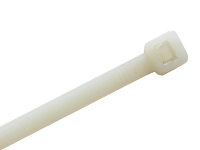
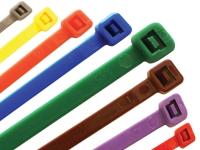








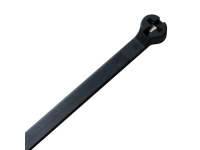







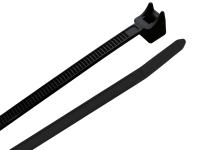











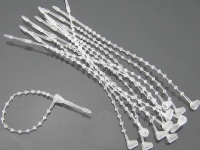










.jpg)











